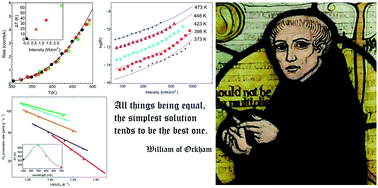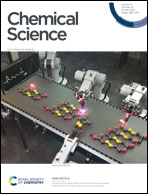Thermal effects – an alternative mechanism for plasmon-assisted photocatalysis†
Abstract
Recent experiments claimed that the catalysis of reaction rates in numerous bond-dissociation reactions occurs via the decrease of activation barriers driven by non-equilibrium (“hot”) electrons in illuminated plasmonic metal nanoparticles. Thus, these experiments identify plasmon-assisted photocatalysis as a promising path for enhancing the efficiency of various chemical reactions. Here, we argue that what appears to be photocatalysis is much more likely thermo-catalysis, driven by the well-known plasmon-enhanced ability of illuminated metallic nanoparticles to serve as heat sources. Specifically, we point to some of the most important papers in the field, and show that a simple theory of illumination-induced heating can explain the extracted experimental data to remarkable agreement, with minimal to no fit parameters. We further show that any small temperature difference between the photocatalysis experiment and a control experiment performed under external heating is effectively amplified by the exponential sensitivity of the reaction, and is very likely to be interpreted incorrectly as “hot” electron effects.

- This article is part of the themed collection: Most popular 2019-2020 catalysis articles


 Please wait while we load your content...
Please wait while we load your content...